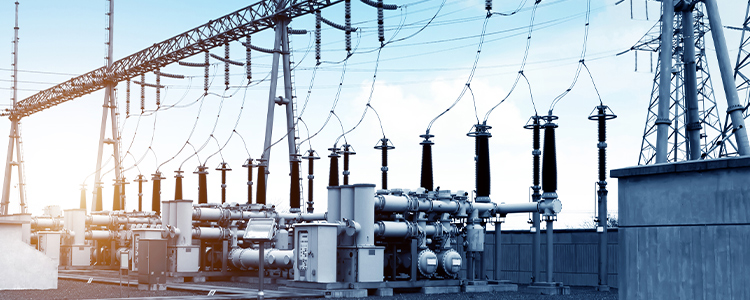- All
- Product Name
- Product Keyword
- Product Model
- Product Summary
- Product Description
- Multi Field Search


Views: 0 Author: Site Editor Publish Time: 2024-09-02 Origin: Site
Switchgear is a collective term for electrical devices that control, protect, and isolate electrical equipment within a system. It’s a crucial component in any electrical distribution network, ensuring the safe and efficient operation of electrical systems. This article will delve into the key factors to consider when choosing the right switchgear for your specific electrical requirements.
Switchgear is an assembly of electrical disconnect switches, fuses, or circuit breakers used to control, protect, and isolate electrical equipment. It’s typically found in substations, industrial plants, and large commercial buildings, playing a crucial role in the distribution and management of electrical power.
Understanding the various types of switchgear is essential for selecting the right equipment for your needs. The three main types are:
Air-insulated switchgear (AIS) is the most traditional form of switchgear, where the insulating medium is air. This type of switchgear is typically used in outdoor applications due to its large size and the need for substantial spacing between components to ensure safety. AIS is known for its reliability and simplicity, making it a popular choice for many electrical installations.
Gas-insulated switchgear (GIS) offers a more compact alternative to AIS, using sulfur hexafluoride (SF6) gas as the insulating medium. The gas is contained within sealed chambers, providing excellent insulation and protection against environmental factors. GIS is particularly suited for urban areas where space is limited and is often used in underground applications.
Hybrid switchgear combines elements of both AIS and GIS technologies, offering a balance between compactness and reliability. It typically features a mix of air and gas insulation, providing flexibility in design and installation. Hybrid switchgear is an emerging technology that aims to reduce the footprint of traditional switchgear while maintaining high performance and safety standards.
Selecting the right switchgear for your electrical system involves several critical factors. Each factor plays a significant role in ensuring that the switchgear meets the operational, safety, and regulatory requirements of the application.
The voltage and current ratings of switchgear are fundamental considerations. These ratings determine the maximum voltage and current the switchgear can handle, ensuring it can operate safely and efficiently within the electrical system. It’s essential to choose switchgear that matches or exceeds the system’s requirements to prevent damage and ensure reliable operation.
The short-circuit current rating (SCCR) indicates the switchgear’s ability to withstand and interrupt fault currents. A higher SCCR means the switchgear can handle larger fault currents, which is crucial for protecting the electrical system from damage during short-circuit events. Selecting switchgear with an appropriate SCCR is vital for ensuring system reliability and safety.
The installation environment significantly impacts the type of switchgear you should choose. Factors such as temperature, humidity, and exposure to environmental elements like dust or corrosive substances can affect the performance and longevity of the switchgear. For instance, gas-insulated switchgear (GIS) is often preferred in urban areas with limited space and harsh environmental conditions.
Safety and protection features are paramount when selecting switchgear. Features such as circuit breakers, fuses, and protective relays play a crucial role in safeguarding the electrical system from faults. Additionally, advanced monitoring and control systems can enhance the safety and efficiency of the switchgear, providing real-time data and alerts for proactive maintenance.
Ensuring that the switchgear complies with relevant industry standards and regulations is essential for legal and safety reasons. Compliance with standards such as IEC, ANSI, and IEEE ensures that the switchgear meets specific performance, safety, and reliability criteria. It’s crucial to verify that the selected switchgear adheres to these standards to ensure its suitability for your application.
Advanced monitoring and control systems are increasingly integrated into switchgear to enhance its functionality and performance. These systems provide real-time data on the switchgear’s operational status, enabling more efficient management and maintenance.
One of the key benefits of advanced monitoring is the ability to detect potential issues before they lead to failures. By continuously monitoring parameters such as temperature, pressure, and electrical load, these systems can identify anomalies early, allowing for timely intervention. This proactive approach reduces the risk of unexpected outages and extends the lifespan of the switchgear.
Moreover, advanced control systems enable automated operation and remote management of switchgear. This automation simplifies the operation of electrical systems, reduces the need for manual intervention, and enhances the overall safety and reliability of the system. Remote monitoring and control capabilities allow operators to manage and troubleshoot switchgear from a distance, providing greater flexibility and responsiveness to changing operational conditions.
Selecting the right switchgear for your electrical system is a critical decision that impacts the safety, efficiency, and reliability of your operations. By considering factors such as voltage and current ratings, short-circuit current rating, installation environment, safety features, and compliance with regulations, you can ensure that your switchgear meets the specific needs of your application.
Incorporating advanced monitoring and control systems into your switchgear can further enhance its performance, providing real-time data, automated operation, and proactive maintenance capabilities. This integration not only improves the efficiency of the electrical system but also extends the lifespan of the switchgear, offering long-term value and peace of mind.
content is empty!